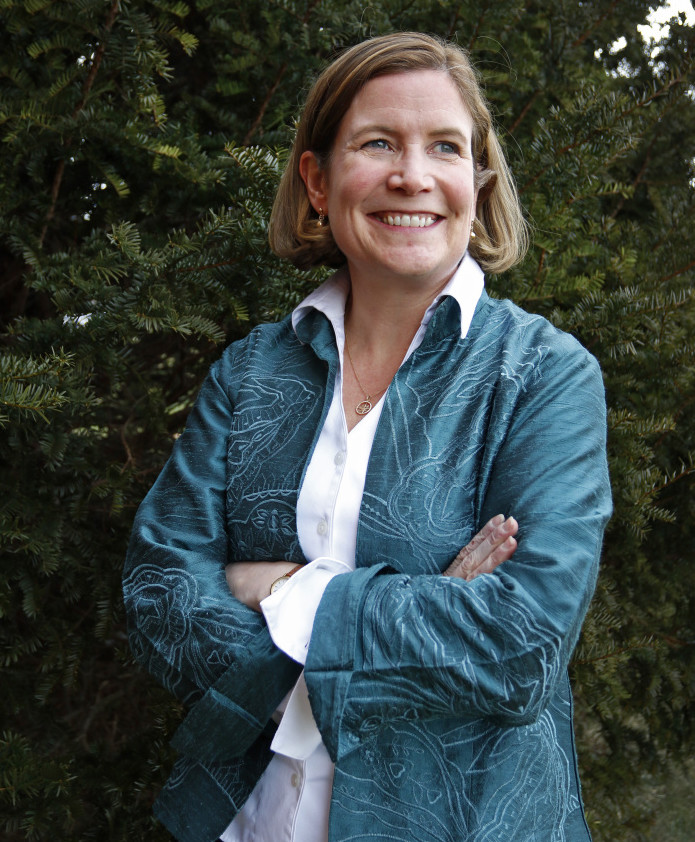Since June 2014, Leigh Hallett has been the executive director of the Maine Federation of Farmers’ Markets, the group that advocates for, promotes and educates about the more than 150 farmers markets around the state.
Source called her up as she was getting ready for the group’s annual meeting Jan. 31 in Hallowell. We talked about the Maine farmers markets she hasn’t had a chance to visit, why she recently hired a cartographer, how many languages she speaks and what Maine has in common with Hawaii.
BACKGROUND: Hallett came to the Maine Federation of Farmers’ Markets with a background in nonprofits and community fundraising. She also taught history. Before that? She was a graduate student in political science and languages. She speaks French, studied Arabic and Hebrew and focused on the history of jihad.
When she moved to Maine for family reasons, she was just a dissertation shy of her degree. “Wouldn’t it be great if I had finished that?” she said, laughing. She’s done some tutoring in Maine but said her Arabic and Hebrew are “extremely rusty.” “They’re not terribly applicable in the farmers market world,” she added.
NOT HER FIRST RODEO: Growing up in New Brunswick, she spent ample time at her grandparents’ apple orchard and farm, and has fond memories of going to the nearby farmers market in Fredericton with her grandfather. Hallett is only the second executive director of the federation, having replaced Colleen Hanlon Smith, who was the group’s first full-time paid staffer.
Since then the federation has grown to include another full-time staffer and a part-timer. The office is in Pittsfield, a good central location since there are farmers markets in practically every corner of the state. “Obviously I go to a lot of markets.” But not all. “The problem is that so many of them are on Saturday,” she said. “I try to be really strategic about it.”
AND MANY MORE: The federation will emphasize more interaction with and growth of markets in Aroostook and Washington counties in the coming year, so Hallett can count on putting more miles on her car and visiting more far-flung locations. “I look at it as being like a bucket list.”
There’s no way she’ll identify a favorite, but among her more memorable shopping trips was one to Princeton in Washington County. “I had happened to check Facebook, and they had posted that it was their last market of the season. I dropped everything and drove north.” She was rewarded by meeting what felt like the entire town at a market that was doubling as a fundraiser. “The vendors all brought hot soup,” she said. There were people playing with Hula-Hoops and steady streams of community members coming and going. “It was just wonderful.”
Then there was that time at the Houlton market where she overheard vendors discussing the best place to park their horses and buggies. “That is not an issue you have in Brunswick,” she said.
MAPPING THE MARKET: With a grant from the Quimby Family Foundation, the federation just started working with cartographer Margot Carpenter of Hartdale Maps in Belfast to create a map of markets in Washington County – a manageable place to start since it has only eight markets – that includes outdoor activities adjacent to markets. The idea is, buy some healthy vegetables, go for a healthy walk.
“In Calais, the farmers market takes place right on a green in downtown and literally a stone’s throw away there is a trail that goes along the river.” The maps will be handed out to tourists and locals.
Beyond the suggestions for trail walks, the handouts will also include information about Maine Harvest Bucks, the program that allows shoppers who receive federal assistance for food to use their SNAP benefits at many farmers markets (and mobile farm stands and food hubs), promoting access to healthy – and local – foods to lower income families. “It’s a fantastic program, but it is a real struggle to let people know about it.”
HARVEST BUCKS: Actually, Hallett said, Maine is second only to Hawaii in terms of redeeming SNAP benefits through small farmers. “It’s still only 1/10 of 1 percent,” she said. “But research has shown that if you can offer these incentives, it does make it worthwhile.”
ON THE AGENDA: Meanwhile, she’s got business to attend to at the annual meeting of the federation board and interested farmers. The agenda includes workshops on scaling up (or down) a farmer’s presence at markets, which is a big issue for many farmers. Scaling up can mean more profits, but “it is hard work,” Hallett said. “One of my board members regularly texts me at 3 or 4 in the morning and that is when she is getting up. And she’s also texted me at 10:30 or 11 (that night). That’s a tough routine.”
PUPS AND PEAS: Other workshops will address issues like soliciting market sponsorships from banks and such (which help keep the SNAP program and the information booth going) and the recent changes to the tax code around grocery items. “That one is not so sexy, but it is really important.”
They’ll also discuss how to develop and enforce market rules, such as whether vendors can leave markets early or bring their dogs. Speaking of, Hallett often brings one of her pugs when she’s traveling to markets. She has three, but only brings the naughty one, who is not to be trusted when left to her own devices. Fortunately, the dog is a big vegetable lover. “When farmers are unpacking the kale they will snap off the stems and drop them and she just goes around and does a sweep,” Hallett said. “Occasionally she’ll get really lucky and get a tomato.”
Send questions/comments to the editors.




Comments are no longer available on this story